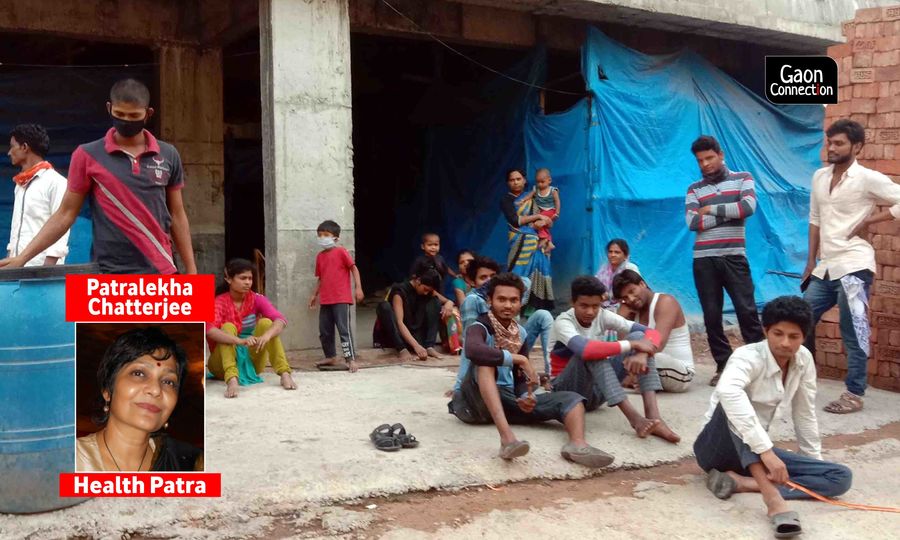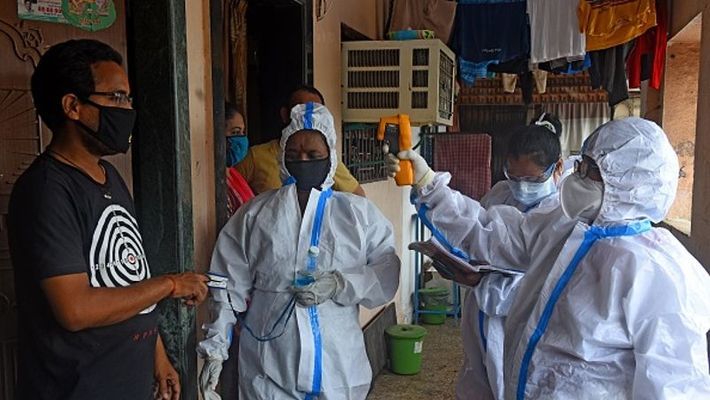COVID-19 is a ‘known unknown’ in rural India
The virus is spreading in rural areas but we don’t know to what extent because there is no disaggregated data in the public domain. But it is clear that even remote tribal areas are not totally untouched.


Fatigue with physical distancing is one key reason why the coronavirus is continuing to spread in many Indian cities. What about India’s villages? Is the idea of the village as a safe haven, far from the reach of the virus, lulling some into a false sense of security?
The coronavirus hit urban India first and our crowded big cities have been the worst hit. In recent weeks, however, there has been a lot of talk about a ‘rural surge’ in India’s COVID-19 story.
One report in September, in a national newspaper, noted that COVID-19 cases in rural parts of Indore district, for instance, had tripled within a month. According to records of the chief medical and health officer of Indore district, COVID cases in the rural areas there, had shot up from just 265 till July 30 to over 800 till September 1. The data also revealed that in the same period, the number of positive cases in the entire district almost doubled from around 6900 to over 13,500 cases.
Many analysts have tried to estimate the spread of the virus in the hinterland by looking at the case tally and death toll in districts that have a dominantly rural population but there are uncertainties here because we don’t really know to what extent these figures reflect numbers from the urban areas where the hospitals are typically located, even in districts with a significant rural population.
Though most people agree that the virus is now circulating in the rural hinterland, experts say it is tough to accurately gauge the extent of its spread. Among the masses of numbers swirling around, there is no authenticated, disaggregated data about COVID cases and deaths from India’s villages that can be easily accessed, and in the public domain.

“As of now, we don’t have precise updated official data on COVID-19 cases and deaths disaggregated by urban and rural areas (based on person’s residence),” said Hemant Shewade, a Bengaluru-based community medicine expert tracking the discourse around COVID-19 data in India. The data on how many of those tested for COVID-19 are from rural areas and how many are city dwellers is also not in the public domain. Even in dominantly rural districts, the testing centres are at the taluka level which are typically located in a city. “We don’t know how many of those who got tested in these centres came from villages in the district, and how many from the urban areas nearby. It is important to have urban-rural break up of key COVID-19 indicators in order to gauge the extent to which the virus is spreading in rural areas,” Shewade added. He explained how it should not be difficult to put out the key COVID-19 related data stratified by urban/rural in the public domain, since the address is captured for those who get tested and those that are COVID-19 positive.
“We know the virus is spreading in rural areas but we don’t know to what extent because there is no disaggregated data in the public domain. It is what I call the ‘ known unknown’,” Prashanth N Srinivas, who teaches and leads a research group on health equity at the Institute of Public Health, Bengaluru said.
Srinivas spoke of a case of an elderly, tribal woman in a remote village in South Karnataka who was diagnosed COVID-19 positive and died two weeks after being discharged from the hospital.
“It is clear that even remote tribal areas are not totally untouched. Frontline workers like ANMs and ASHAs are doing their best, but poor households in rural areas often do not require a certification of death and hence deaths can go unreported,” he said. Srinivas says there is an urgent need for “simple decentralized serosurveys in rural areas which can tell us the extent of antibodies in the population which would be a marker of the extent to which the virus has touched the hinterland.
“We also need district-level data disaggregated by age, caste, tribes to gauge testing penetration. Even during the Spanish Flu, way back in 1920, cases were reported from tribal areas where I am doing field work presently. Today, no place is interior enough to be completely safe from the virus,” Srinivas added.

As I write, India’s COVID-19 death toll has crossed 1.2 lakh, the case tally has surpassed 8 million. The Ministry of Health and Family Welfare tells us that till date, Maharashtra has the highest death toll (43554). There have been more than 11,000 deaths in Tamil Nadu and Karnataka and over 6,000 COVID-19 deaths in Andhra Pradesh, Delhi, Uttar Pradesh and West Bengal.
But the official portal, which puts out the state-wise status of COVID-19, does not offer numbers on urban and rural India separately. Neither do state government portals have updates on the rural-urban death toll and case tally.
The extent of the spread of the coronavirus in rural India matters because almost two-thirds of all hospital beds in this country are found in urban areas, home to nearly one-third of the population. The primary health care system in many villages is overstretched, under-resourced and sometimes dysfunctional. The lack of public transport linking remote villages to cities where the hospitals are located, is also a big issue in many states.
What is adding to the problem is the belief among many rural Indians that somehow they are safe and untouched by the virus. What is even more worrying is that India’s frontline women health workers, or ASHAs (Accredited Social Health Activists) who play a critical role in fighting the COVID-19 pandemic are facing problems convincing people to wear masks and observe physical distancing.
Last week, talking to an ASHA worker in a village in Nawada district, Southern Bihar, it was clear that challenges facing frontline workers are mounting.
“We keep telling people they must wear masks. And that they must keep sufficient distance. But few listen. They say the air is pure in the village, that they are strong and hardy people with high immunity. They don’t feel the need to wear masks.”
The ASHA worker said no one had been diagnosed with Corona in her village. No one had also got tested. The nearest Corona testing centre was two kilometres away. There was great wariness towards getting tested because of the continuing stigma attached to the virus and for fear of being quarantined which would impact livelihood, she added.

One could dismiss this as an isolated instance but recent road journeys to Haryana and Rajasthan also provided ample evidence of a general indifference to wearing masks in the interior.
The virus is impacting rural India in many other insidious ways. One major area of concern is worsening malnutrition.
Pavitra Mohan, a pediatrician and co-founder of Basic Health Care Services, that runs a network of six not-for-profit primary healthcare clinics called AMRIT Clinics in remote, rural and high migration communities in Udaipur district in South Rajasthan, told me about a survey that his team conducted this year.
AMRIT Clinics cater to isolated communities of about 12,000 people each, 90 per cent of which are tribal. About 60 per cent of the households have at least one man who has migrated to the city. Mohan and his team discovered some stark truths during their survey.
“Food inflation has been rising since January 2019 from 2.24 per cent to about 10 per cent. Since August 2019, we have been seeing an increase in child malnutrition among 1000 households we monthly weigh. Following the lockdown, we did not weigh children for three months. Since June, when we resumed weighing, we are finding a further increase in malnutrition levels. We are also seeing a reduction in household food availability and consumption: for several food items such as pulses and oil, that we enquired about, most households either did not have them or had a supply that would last less than two weeks, among the 200 households we surveyed. We need more focus on nutrition security, not just food security,” said Mohan,
As the festive season gathers momentum, there is fear that there will be a spike in the number of COVID-19 infected. It is also clear that though the pace of transmission of the virus in rural areas is possibly slower than that in the cities, India’s villages are not immune to the virus.
This brings us to a critical issue – cities have been in the spotlight in India’s pandemic story. What we need is more attention to village India which means more granular data on the trajectory of the virus through rural areas so that the direct and indirect impact can be tracked and the pandemic response modified accordingly.

